Diagnostic Ultrasound
SonoDetect provides the most advanced technology in diagnostic ultrasound. We are innovative, we have high gamma equipment and we have introduced an integrated system of clinical sonography with different modalities for appropriate use criteria in daily practice, covering a wide spectrum from obstetrics-gynecology, pediatrics and adults. (visit services section).
We know that every patient faces complex decisions regarding their diagnosis and treatment, so we offer to help you refine your diagnosis with our sonographic studies. Our work allows your physician to answer specific questions about your concerns, as well as better understand the pathophysiology and guide you to better outcomes.
Get a detailed checkup of your body with our early detection ultrasound services and discover possible hidden health problems before they become a problem.
We have a qualified and professional team
SonoDetect’s staff is certified by the American Registry of Diagnostic Medical Sonography (ARDMS) which through examination awards credentials in the area of ultrasound and represents the highest level in the field. Trust the experts at SonoDetect for your diagnostic needs.
Diagnostic Ultrasound
Ultrasound imaging uses sound wave technology to examine the internal parts of your body. At SonoDetect in SaDorla, Florida, the team perform general ultrasound testing to examine any body part, looking for abnormalities or lumps. To find out more about general ultrasound testing, call the Doral area office or schedule an appointment online today.
General Ultrasound services offered in SonoDetect, Doral
Diagnostic Ultrasound Q&A
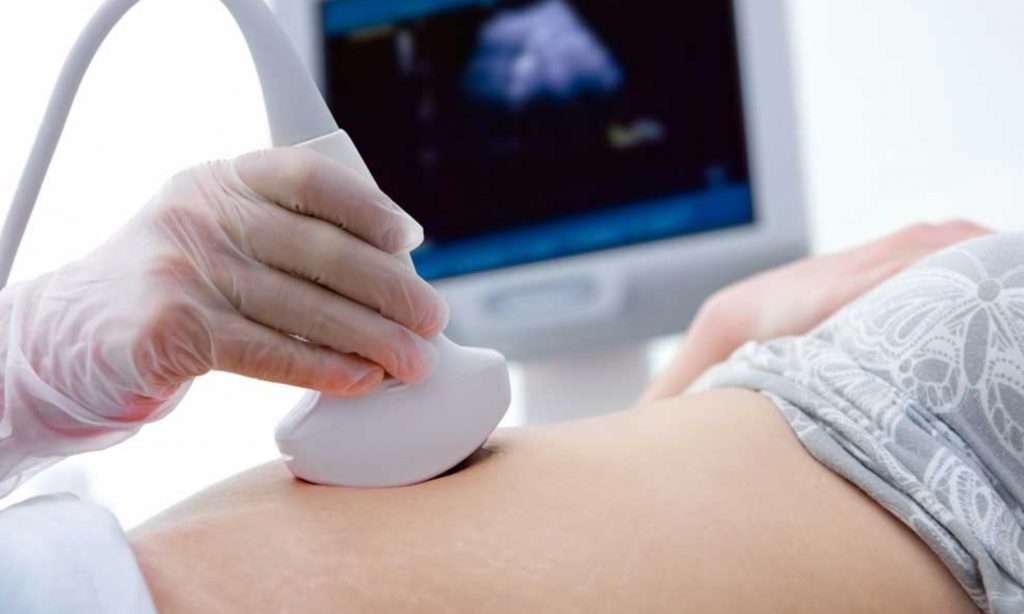
What is a Diagnostic Ultrasound?
Diagnostic ultrasound, also called sonography or diagnostic medical sonography, is an imaging method that uses sound waves to produce images of structures within your body. The images can provide valuable information for diagnosing and directing treatment for a variety of diseases and conditions.
Most ultrasound examinations are done using an ultrasound device outside your body, though some involve placing a small device inside your body.
A general ultrasound is one of the imaging tests available at SonoDetect. Ultrasound imaging uses high-frequency sound waves to create images of the inside parts of your body for examination.
During a general ultrasound, your sonographer places an ultrasound wand, or transducer, on your skin over the part of the body under examination. They slide the wand over your skin as it sends in the sound waves, which bounce off your body part and return to the wand.
The ultrasound wand sends the information to a computer that translates the sounds into real-time images — in a matter of seconds. With a general ultrasound, you can see the structure and function of the internal body part.
Ultrasound testing is radiation-free, making it a safe imaging tool.
What types of diagnostic ultrasounds do we offer at SonoDetect?
- Abdominal Ultrasound
- Kidney Ultrasound
- Bladder Ultrasound
- Ultrasound of the prostate (transabdominal)
- Small Parts Ultrasound
- Carotid Ultrasound
- Arterial Doppler Ultrasound
- Venous Doppler Ultrasound
Why might I need a Diagnostic Ultrasound?
The SonoDetect team performs a general ultrasound to look for lumps or other abnormalities on any part of the body. Types of conditions a general ultrasound might look for include:
- Underlying cause of pain and swelling
- Lumps in the breasts, kidneys, liver, or thyroid
- Blockages or narrowing in blood vessels
- Structural abnormalities of abdominal organs, breast or thyroid gland.
The team may perform a Doppler ultrasound to evaluate the flow of blood through your blood vessels. That ultrasound test helps look for circulation problems like blood clots and atherosclerosis (buildup of plaque along the blood vessel wall).
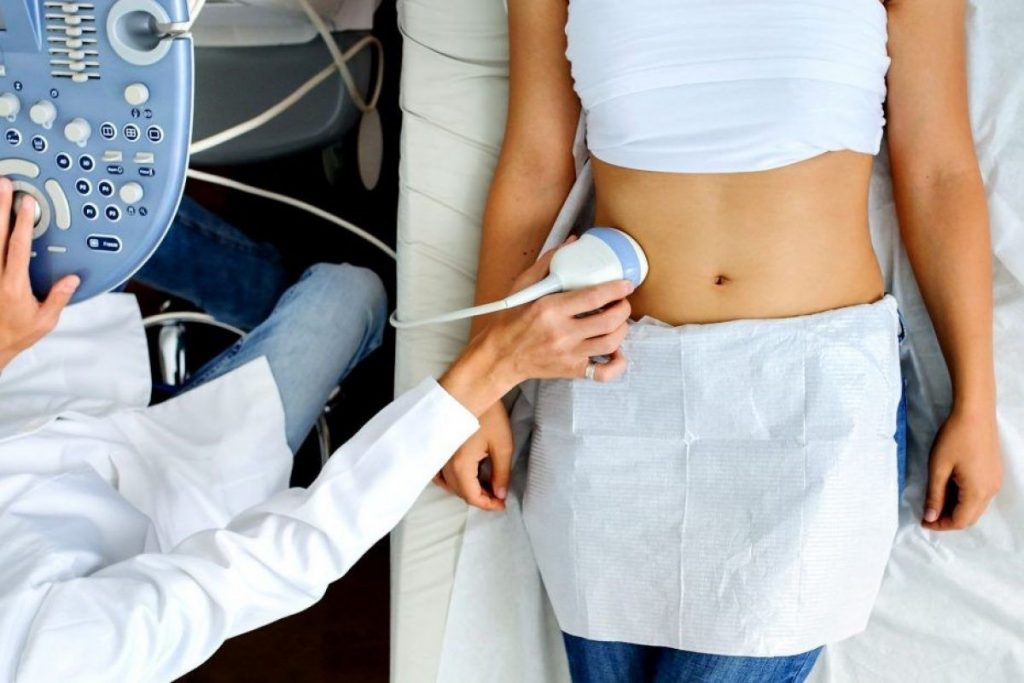
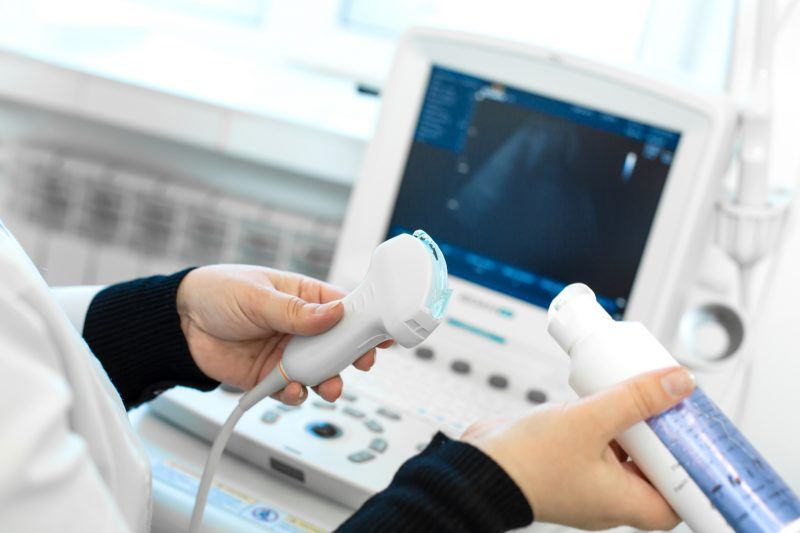
What happens during a Diagnostic Ultrasound?
A general ultrasound at SonoDetec takes 10 to 15 minutes. The team asks that you come to your appointment wearing comfortable clothing. Your sonographer applies a gel to your skin and then moves the wand over the internal organ to get the images.
You may feel some pressure from the ultrasound wand, but this imaging test causes very little discomfort.
What happens after a Diagnostic Ultrasound?
You can go back to your usual activities after your general ultrasound at SonoDetect unless otherwise directed by your health care provider. The team gets results from your ultrasound test within the week.
If you have concerns about a lump or bump and think a general ultrasound can provide the information you need, the team at SonoDetect can help.
To find out more about general ultrasound, call SonoDetect or book an appointment online today.
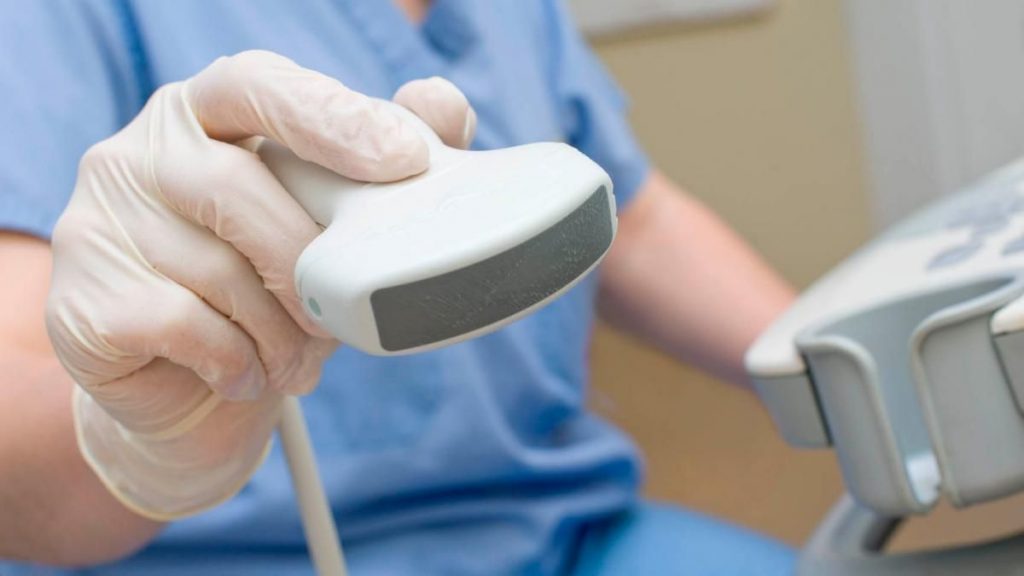
Pelvic Ultrasound
Pelvic pain is a common health problem, especially for women. That type of pain may occur from any of the organs located in the lower abdominal area. To help you get the answers you need, the team at SonoDetect in Doral, can perform a pelvic ultrasound. This safe and quick test creates images of the lower abdominal organs, looking for abnormalities. To schedule your pelvic ultrasound, call the Doral area office or book online today.
Pelvic Ultrasound Q&A
What is a Pelvic Ultrasound?
A pelvic ultrasound is a noninvasive diagnostic exam that produces images that are used to assess organs and structures within the female pelvis. A pelvic ultrasound allows quick visualization of the female pelvic organs and structures including the uterus, cervix, vagina, fallopian tubes and ovaries.
It uses high-frequency sound waves to quickly get pictures of these organs in real-time, allowing your health care provider to assess structure and function and look for abnormalities.
A pelvic ultrasound is a safe imaging tool that gets pictures without radiation.
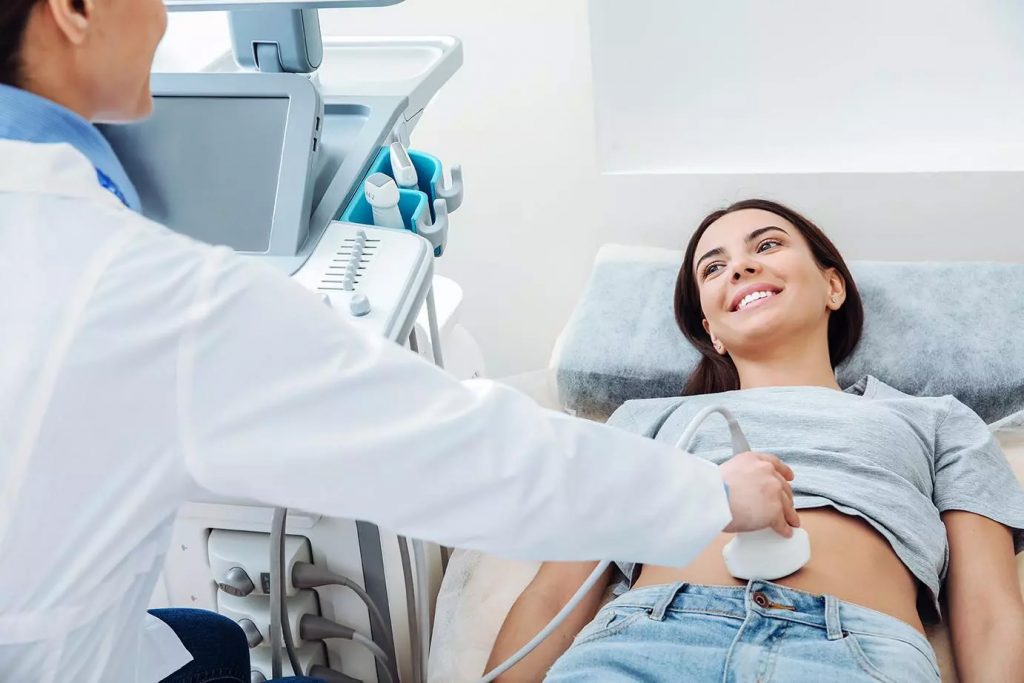
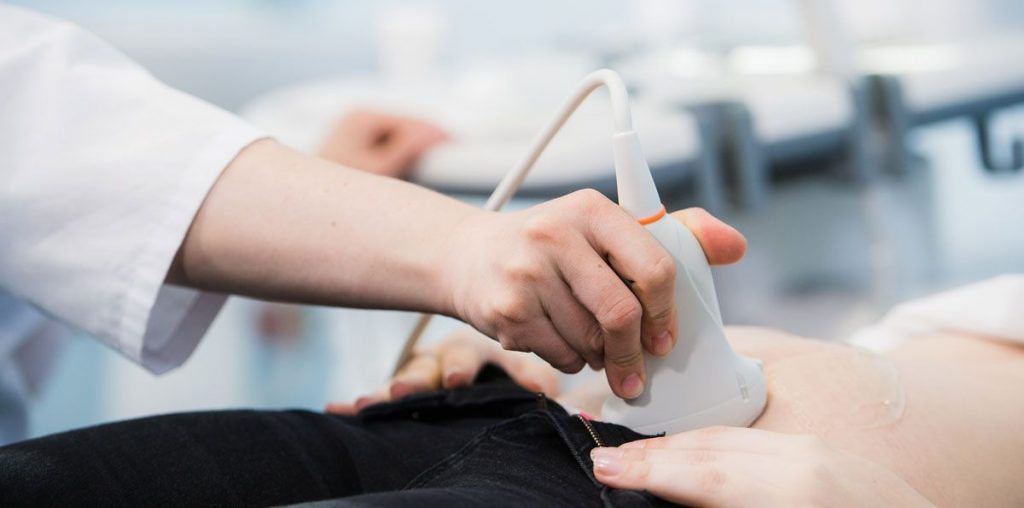
What are the Types of Pelvic Ultrasounds?
SonoDetect is an ultrasound clinic that uses the most advanced technology for ultrasound testing. They offer two types of pelvic ultrasounds:
Transabdominal ultrasound
During a transabdominal ultrasound, the team places the ultrasound wand, or transducer, over the skin on the lower abdominal area to evaluate the reproductive organs, bladder, and the lower part of the bowel.
Transvaginal ultrasound
The transvaginal ultrasound is for women. During this pelvic ultrasound, the team uses a special ultrasound tool that they insert into the vagina. The transvaginal ultrasound creates clearer images of the female reproductive organs, helping to find structural abnormalities.
For women, either type of pelvic ultrasound may help find gynecological conditions like fibroids, ovarian cysts, or polyps.
How Do I Prepare For A Pelvic Ultrasound?
The SonoDetect team gives you specific instructions on how to prepare for a pelvic ultrasound.
Since a full bladder enhances the transabdominal pelvic image, you will need to make sure your bladder is full for this exam. The usual bladder prep for this procedure is to drink three 8-oz glasses of water 45 minutes to 1 hour before the start of the exam.
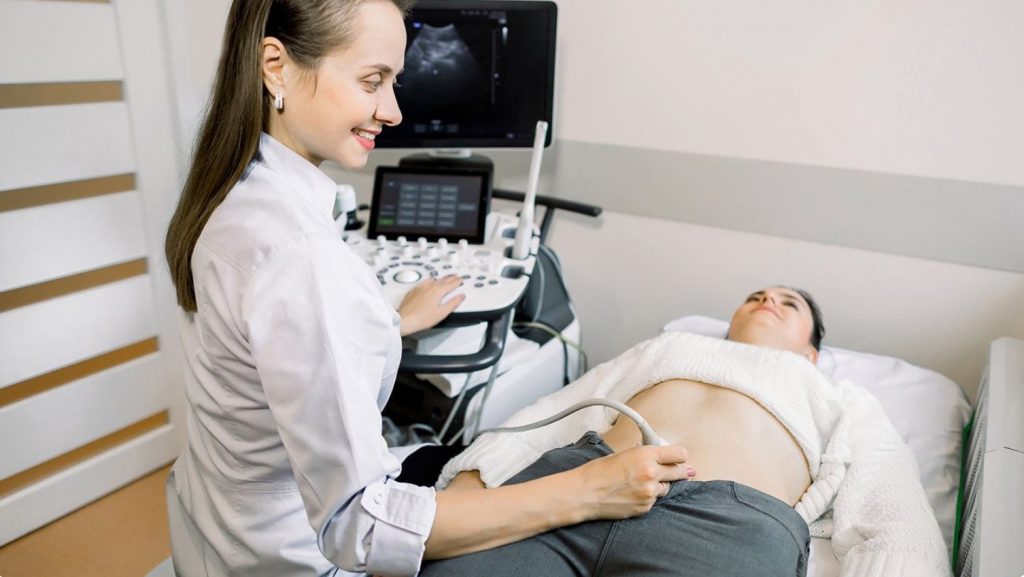
Do Pelvic Ultrasounds Hurt?
During transabdominal ultrasounds, most women don’t feel any pain or discomfort when the technician moves the transducer across their tummy. But you may be uncomfortable if you have a full bladder. Some women also find laying on the exam table uncomfortable.
Thyroid Ultrasound
Thyroid Ultrasound services offered in SonoDetect
Your thyroid produces hormones that affect your body’s metabolism. Thyroid problems are common and affect the production of these hormones. The team at SonoDetect in Doral, Florida, perform thyroid ultrasound testing to look at the structure and function of the thyroid and signs of abnormalities.
Thyroid ultrasound is a sound wave picture of the thyroid gland taken by a hand-held instrument and translated to a 2-dimensional picture on a monitor. It is used in diagnosis of tumors, cysts or goiters of the thyroid, and is a painless, no-risk procedure.
Call the Doral area office or schedule an appointment online today.
Thyroid Ultrasound Q&A
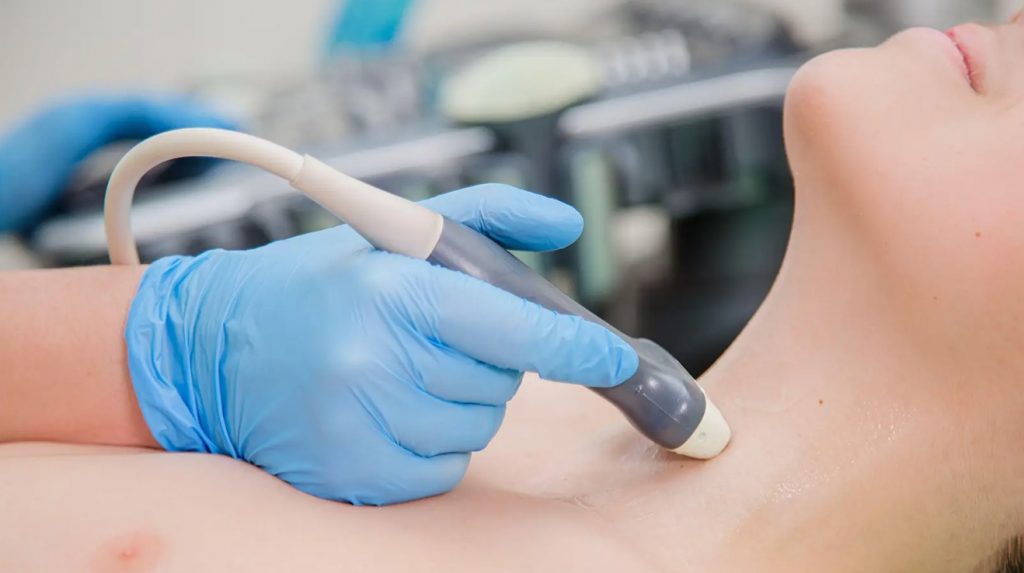
What is the Thyroid?
The thyroid is an endocrine gland in the front of your neck. The gland produces nine different hormones collectively called the thyroid hormones. These hormones regulate many body functions, including your metabolism, mood, and how fast your heart beats.
Thyroid disorders are very common and tend mainly to occur in women, although anybody – men, teenagers, children, and babies, too – can be affected. About one in 20 people has some kind of thyroid disorder, which may be temporary or permanent.
What Is A Thyroid Ultrasound?
Thyroid ultrasound is a sound wave picture of the thyroid gland taken by a hand-held instrument and translated to a 2-dimensional picture on a monitor. It is used in diagnosis of tumors, cysts or goiters of the thyroid, and is a painless, no-risk procedure.
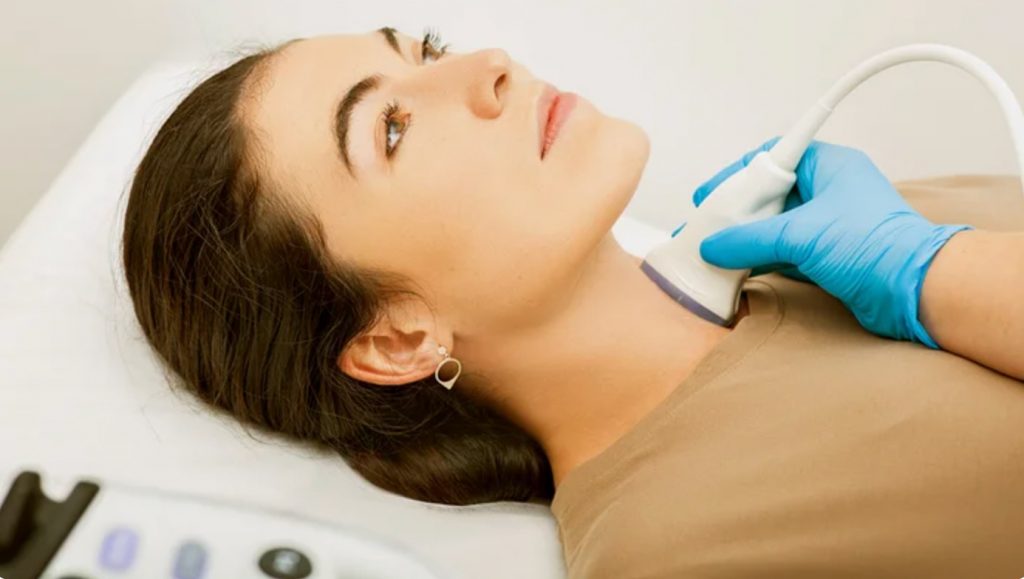
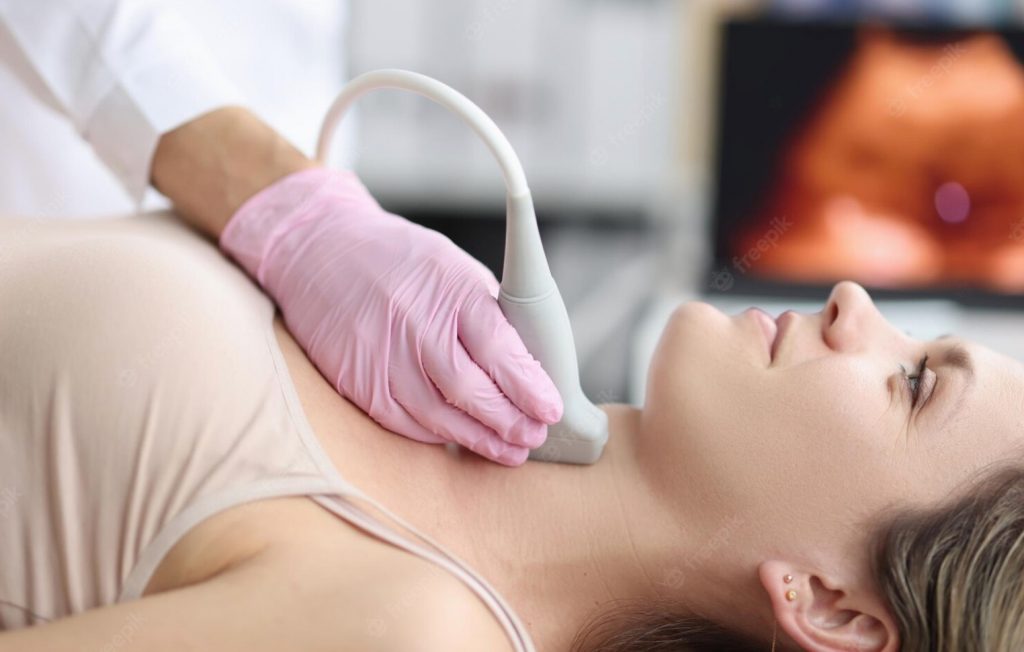
Who needs a Thyroid Ultrasound?
How should I prepare for the ultrasound? What should I wear to my appointment?
- Wear comfortable clothing that exposes your neck, to allow the ultrasound technician or physician to easily examine the neck. Examples of clothing that might make the ultrasound examination difficult include collared shirts, turtlenecks, etc.
- You do not need to make any special diet or medication changes for this exam.
What happens during a Carotid Ultrasound?
Your thyroid ultrasound at SonoDetect takes 10 to 15 minutes.
Your sonographer has you lie back on the exam chair and applies a gel to the skin on the front of your neck. The gel makes it easier for your sonographer to glide the hand-held ultrasound wand over your skin. It also improves imaging.
Your sonographer slowly and methodically moves the ultrasound wand over your thyroid gland to get the needed images. You may feel some pressure during the test but no pain.
You can go back to your normal day following a thyroid ultrasound. The team sends your ultrasound scan to the radiologist and gets the results back to you within a week.
To schedule a thyroid ultrasound, call SonoDetect or book online today.
General Ultrasound services offered in SonoDetect, Doral.
Carotid Ultrasound
Carotid ultrasound is a safe, noninvasive, painless procedure that uses sound waves to examine the blood flow through the carotid arteries. It also evaluates the thickness of the carotid artery wall and checks for clots.
One carotid artery is located on each side of the neck. These arteries deliver blood from the heart to the brain.
A carotid ultrasound tests for blocked or narrowed carotid arteries, which can increase the risk of stroke. The results of the test can help your health care provider determine a treatment to lower your stroke risk.
At SonoDetect in Doral, Florida, the team perform carotid ultrasound testing to evaluate the flow of blood through these arteries. Call the Dorla area office or book an appointment online today.
Carotid Ultrasound services offered in SonoDetect, Doral.
Carotid Ultrasound Q&A
Why would my doctor order an ultrasound of my carotid artery?
A carotid ultrasound is done to look for for narrowed carotid arteries, which increase the risk of stroke. Carotid arteries are usually narrowed by a buildup of plaque — made up of fat, cholesterol, calcium and other substances that circulate in the bloodstream.
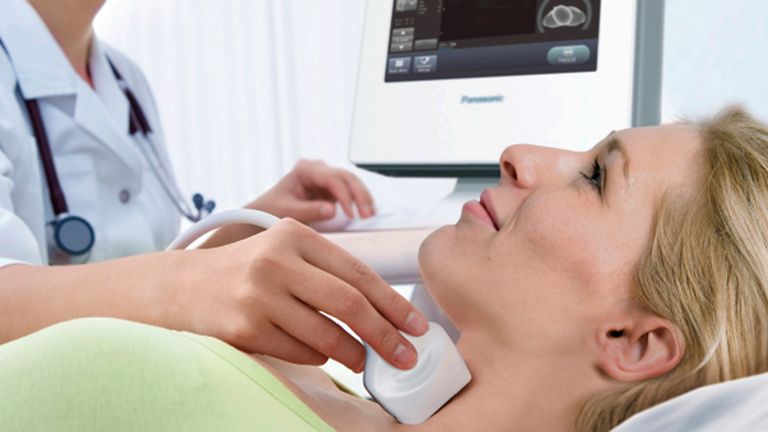
What types of preparations does a Carotid Ultrasound include?
The SonoBreasts team provides instructions on how to prepare for your carotid ultrasound. In most cases, no special preparation is needed. There are no diet restrictions or a need to change your usual medication schedule.
The team, however, requests you come to your carotid ultrasound wearing comfortable clothing and remove any necklaces prior to your test.
This test doesn’t require much preparation. However, you may be asked not to smoke or drink caffeine for at least 2 hours before the test. Smoking and caffeine use can shrink your blood vessels and affect the accuracy of the test.
What does a carotid ultrasound involve?
Carotid ultrasound, also called Doppler ultrasound or Carotid duplex ultrasound, is a painless and harmless test that uses high-frequency sound waves to create pictures of the insides of the two large arteries in your neck. These arteries, called carotid arteries, supply your brain with oxygen-rich blood.
What happens during a Carotid Ultrasound?
Your carotid ultrasound at SonoDetect takes 15 to 30 minutes. Your sonographer has you lie back on the exam chair and applies a water-based gel to the skin on your neck. The gel improves the movement of the ultrasound transducer and makes the images clearer.
Your sonographer places the transducer on your neck and slides it over your skin to get the desired images. You may feel some pressure but no discomfort during your ultrasound.
Ultrasound imaging is safe and quick and uses no radiation. After your test, you can go back to your usual routine.
The SonoDetect team provides results from your carotid ultrasound within a week.
Find out more about carotid ultrasound at SonoDetect by calling the office or scheduling an appointment online today.
Arterial/Venous Doppler Ultrasound
What is a Doppler ultrasound?
A Doppler ultrasound is a noninvasive test that can be used to estimate the blood flow through your blood vessels by bouncing high-frequency sound waves (ultrasound) off circulating red blood cells. A regular ultrasound uses sound waves to produce images, but can’t show blood flow.
A Doppler ultrasound may help diagnose many conditions, including:
- Blood clots
- Poorly functioning valves in your leg veins, which can cause blood or other fluids to pool in your legs (venous insufficiency)
- Heart valve defects and congenital heart disease
- A blocked artery (arterial occlusion)
- Decreased blood circulation into your legs (peripheral artery disease)
- Bulging arteries (aneurysms)
- Narrowing of an artery, such as in your neck (carotid artery stenosis)
A Doppler ultrasound can estimate how fast blood flows by measuring the rate of change in its pitch (frequency). During a Doppler ultrasound, a technician trained in ultrasound imaging (sonographer) presses a small hand-held device (transducer), about the size of a bar of soap, against your skin over the area of your body being examined, moving from one area to another as necessary.
This test may be done as an alternative to more-invasive procedures, such as angiography, which involves injecting dye into the blood vessels so that they show up clearly on X-ray images.
A Doppler ultrasound test may also help your doctor check for injuries to your arteries or to monitor certain treatments to your veins and arteries.
No preparation required
Q & A
No, it is a safe, noninvasive, non-hazardous procedure. The Ultrasound utilizes sound waves without harmful side effects and doesn’t use ionizing radiation as an x-ray test does.
Yes, but it is based on our scheduled patients, Walk-ins are accommodated on an availability basis. Remember, a patient with an appointment has priority.
At the time of your date, you will need to provide a Credit Card, Debit Card, or Cash. We don’t accept Money Orders or Checks.
No, our personalized service is for self-pay patients. We don’t work with any insurance companies, Medicaid, Medicare, or any third-party payers, but our prices are affordable for all. We are in the process of enrollment for healthcare insurance.
To prepare for your exam, please review the section of Ultrasound
Services, open your specific exam and there you can see if the
exam your having done requires preparation
There will be no waiting time. Please do the check-in 15 minutes early. We need from you some information and must sign some documents prior to the exam. Remember, your delay may affect the next patient’s schedule.
The results are delivered through the e-mail address you have provided in the forms. Once you receive the results from the radiologist, you can request the images through our contacts



